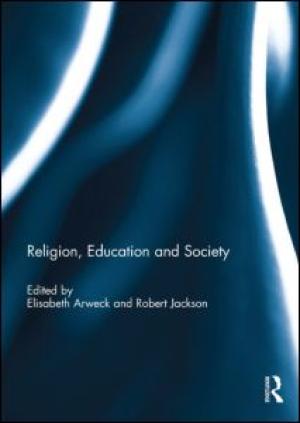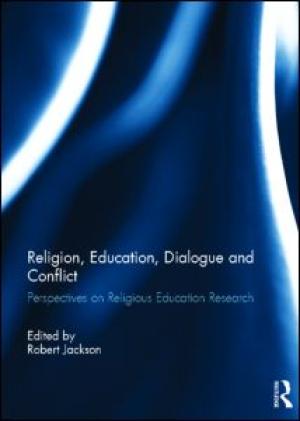Resources

Click Here for Book Review Abstract: This volume presents findings from recent research focusing on young people and the way they relate to religion in their education and upbringing. The essays are diverse and multidisciplinary - in terms of the religions they discuss (including Christianity, Islam and Sikhism); the settings where young people reflect on religion (the classroom, youth club, peer group, families, respective religious communities and wider society); the different perspectives which relate to religious education and socialisation (the teaching of RE, the role of teachers in pupils’ lives, the way teachers’ personal lives shape their approach to teaching, school ethos and social context, and the place and rationale of RE); the contexts within which the authors work (different national settings and various academic disciplines); and the methodology used (qualitative, quantitative and mixed-method approaches). The authors make important contributions to the debate about the role of religious education in the curriculum. They demonstrate the crucially important formative influence of religious education in young people’s lives which reaches well into their adulthood, shaping religious and other identities, and attitudes towards the ‘other’ - whatever that ‘other’ may be. This book was originally published as a special issue of the Journal of Beliefs & Values. (From the Publisher)

Click Here for Book Review Abstract: Religion, Education, Dialogue and Conflict analyses the European Commission-funded REDCo project, which addressed the question of how religions might contribute to dialogue or conflict in Europe. Researchers in education from eight countries – the UK, Estonia, France, Germany, the Netherlands, the Russian Federation, Norway and Spain – studied how young Europeans of different religious, cultural and political backgrounds could engage in dialogue in the context of the school. Empirical studies conducted with 14-16 year old students included them offering their own perspectives and analyses of teaching and learning in both dialogue and conflict situations. Although there were some different national patterns and trends, most students wished for peaceful coexistence across differences, andbelieved this to be possible. The majority agreed that peaceful coexistence depended on knowledge about each other’s religions and worldviews, sharing common interests and doing things together. The project found that students who learn about religious diversity in school are more willing to discuss religions and beliefs with students of other backgrounds than those who do not. The international range of expert contributors to this book evaluate the results of the REDCo project, providing examples of its qualitative and quantitative studies and reflecting on the methods and theory used in the project as a whole. This book was originally published as a special issue of the British Journal of Religious Education. (From the Publisher)
While teaching a course on religion and consumer culture in the United States, the author was intensely preoccupied with holding the interest of her undergraduate students during class sessions. Inspired in part by the subject matter of the course, she reflects here upon the extent that her courses on American religion drew upon the semiotics of commercial entertainment. While acknowledging the limitations and distortions possible in thinking of the teacher as an entertainer, this paper explores the teaching metaphor of the Vaudevillian Performer, arguing that if put in context with the work on reception in cultural studies, it can be a helpful model in the classroom.
A web page full of reliable  analysis and strategies, supported by publications. "On the Cutting Edge" is a professional development non-profit aimed at geoscience faculty, but the issues analyzed here are applicable across high education. 
Video. Four extended video presentations, from the Merlot Elixer Initiative, showing faculty in various disciplines (NOT in religion or theology) addressing the issue of how to foster students’ abilities to integrate learning–over time, across courses, and between academic, personal, and community life.
Executive Summary of the HERI (UCLA) study of the Spiritual Life of College Students.
Video. A short video summarizing some of the most important characteristics of students today - how they learn, what they need to learn, their goals, hopes, dreams, what their lives will be like, and what kinds of changes they will experience in their lifetime. Created by Michael Wesch in collaboration with 200 students at Kansas State University.
A report from the Social Science Research Council (SSRS) that extends findings reported in the 2010 book "Academically Adrift" to document practices associated with improved student performance, as well as differences across individuals and institutions in the level of learning.
Data and analysis-rich article (2003) in “Educause,” an education journal, focused especially on the “millennial generation” and computer technology. The author discusses how the learning styles, attitudes, and aptitudes of today's "new students" vary depending on age, experience, and preferences, requiring colleges and universities to find a variety of ways to meet students' expectations.
A brief discussion of recent research and literature on students’ reading habits and a few tips on structuring classroom activities and assignments to improve students’ performance.